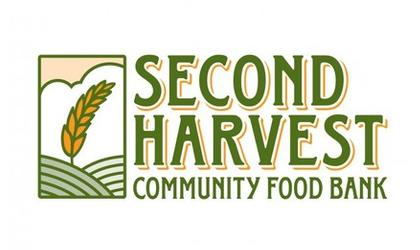Face of hunger in northwest Missouri and eastern Kansas revealed by new Feeding America report
Largest, most comprehensive analysis of charitable food assistance in America reports more than 60,000 people served by Second Harvest Community Food Bank annually
St. Joseph, MO – August 20, 2014 – A new study by Second Harvest and Feeding America shows that one in five (an estimated 60,000 people) in Northwest Missouri and Eastern Kansas turn to food pantries and meal service programs to feed themselves and their families. This includes 17,000 children and 8,400 seniors.
The Hunger in America 2014 local findings show that more than 7,500 people are served each week by programs supported through Second Harvest. Accounting for multiple program visits, over 500,000 members turned to Second Harvest network programs over the course of the year. This means members are visiting Second Harvest network programs an average of nearly nine times a year.
Nationally, Hunger in America 2014 found that more than 46.5 million people turn to agencies and programs of the Feeding America network of food banks every year. Second Harvest is a member of the Feeding America network.
The study documents household demographics and offers a snapshot of the people served by Second Harvest – their circumstances, the challenges they face and the choices they are forced to make living on extremely limited household incomes. It is also the first nationally-representative study that assesses the prevalence of past and current members of the U.S. Military and adult students receiving charitable food assistance.
“The results of this study show us that the face of hunger is one we might recognize,” said Chad Higdon, Second Harvest Executive Director. “Many of our neighbors who are seeking food assistance have jobs, raise families, work toward education and struggle with health problems, like all of us. Too often, our members also have to make difficult trade-offs to get enough food for their families. As we look ahead to/honor Hunger Action Month this September, it is important to remember the critical work Second Harvest does every day, and how much more we can do together to solve hunger in Missouri and Kansas.”
Hunger Study Data Reflects Activity at Local Schools
Higdon also said that the study results continue to point to the problem of childhood hunger in northwest Missouri and northeast Kansas. In 2011, Backpack Buddies served 2,000 children, a supplemental feeding program to help children have nutritious meals at home when school is closed. During the 2014-15 school year, Higdon says Backpack Buddies will serve 3,350 children in 27 districts.
During No Hunger Summer, Second Harvest’s summer feeding program, 34,000 meals were served to children under the age of 18 at 23 locations throughout the agency’s service territory. The Campus Cupboard program for older students is expanding this year, and a new initiative called Kate’s Café is planned to help meet after-school feeding needs for school children.
Key statistics from the Hunger in America report reflect not only ongoing needs for school children across all age groups, but many other demographics trends related to hunger:
Members struggling with health issues
- 80 percent of households report purchasing inexpensive, unhealthy food because they could not afford healthier options.
- Nearly 60 percent of households report having to choose between paying for food and paying for medicine or medical care in the last year.
- 30 percent of households include a member with diabetes.
- 54 percent of households have a member with high blood pressure.
Making tough choices and trade-offs to keep food on the table
Following are the choices client households reported making in the past 12 months:
- 56 percent report choosing between paying for food and paying for utilities.
- 24 percent of these households are making the choice every month.
- 62 percent report making choices between paying for food and paying for transportation.
- 21 percent of these households are making the choice every month.
- 43 percent report choosing between paying for food and paying for housing.
- 11 percent of these households are making the choice every month.
Low wages, underemployment and unemployment driving need
- 72 percent of client households fall at or below the federal poverty level.
- 49 of respondents have an annual income for their household below $10,000.
- Only 9 percent of respondents have faced foreclosure or eviction in the past five years.
- Among all households served by Second Harvest agencies and programs, 14 percent have at least one member who has been employed in the past year.
Hunger in America 2014 was conducted using rigorous academic research standards and was peer reviewed by a technical advisory team including researchers from American University, University of Illinois at Champaign-Urbana and the Urban Institute. Nationally, confidential responses were collected on electronic tablets by 6,000 trained volunteer data collectors.
The study was funded by The Howard G. Buffett Foundation.
A summary of the local findings is available here. The full national report is available on Feeding America’s website at Hunger in America 2014.
© Many Signals Communications
MOST VIEWED STORIES
Holton man killed in Jackson Co crash
Morrill pair arrested on drug, child endangerment charges
Cold case investigation leads to Holton warrant
Effingham owner regains truck following theft, arrest
Horton City Clerk's resignation accepted Monday
Local residents avoid injury in chain reaction crash
90 mph+ downburst winds blamed for Thursday damage
Wamego man sentenced in second fentanyl-related death
Mayetta pair arrested on meth, child endangerment charges
Stolen trailer, 4-wheeler, recovered in Atchison
Winchester native named as Amberwell CEO
Juveniles face charges following Atchison break-in
Atchison Co's Oswald named honorary bailiff for KS Court
Former Kickapoo Tribal chairman arrested
Two arrested following Friday Jackson Co traffic stop
McLouth man injured in Monday wreck
No injuries in early Sunday morning house fire in Falls City
Senator Slama on tax relief efforts
LATEST STORIES
Holton property search concludes with arrest
Former Kickapoo Tribal chairman arrested
Atchison company earns energy grant; upgrades planned
Winchester native named as Amberwell CEO
April is Alcohol Awareness Month in Nebraska
MoDOT to discuss Holt County bridge projects
Sheriff's Office to take part in drug take back event
Council hears report from golf course


 Printer Friendly
Printer Friendly
 Email to a Friend
Email to a Friend






